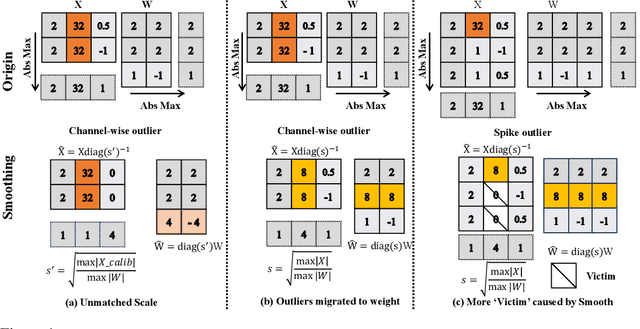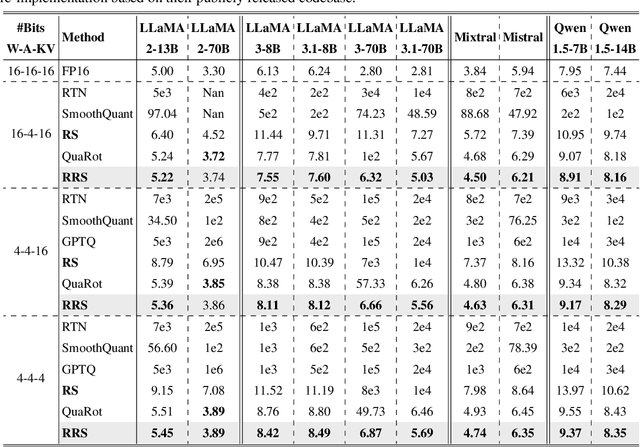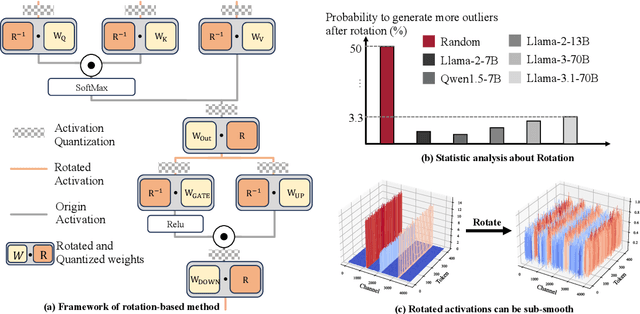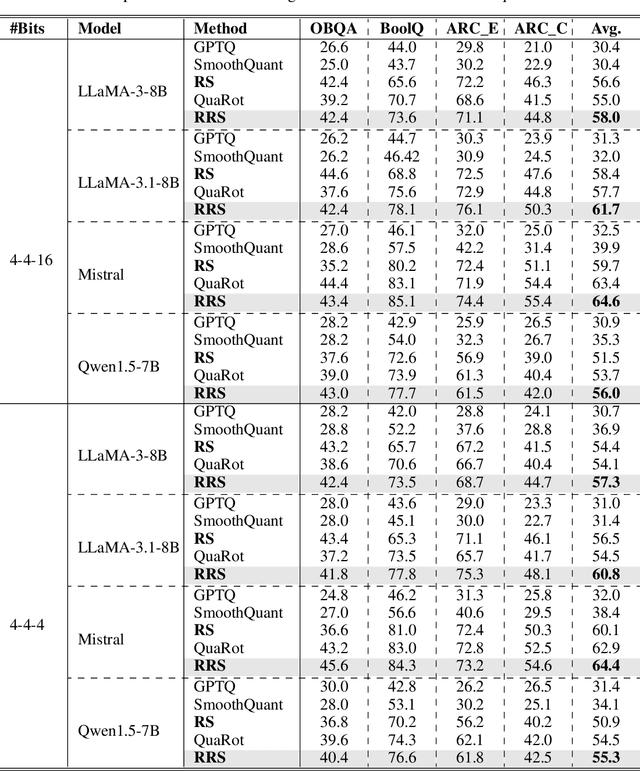Jianwei Zhang
additional authors not shown
FABG : End-to-end Imitation Learning for Embodied Affective Human-Robot Interaction
Mar 04, 2025Abstract:This paper proposes FABG (Facial Affective Behavior Generation), an end-to-end imitation learning system for human-robot interaction, designed to generate natural and fluid facial affective behaviors. In interaction, effectively obtaining high-quality demonstrations remains a challenge. In this work, we develop an immersive virtual reality (VR) demonstration system that allows operators to perceive stereoscopic environments. This system ensures "the operator's visual perception matches the robot's sensory input" and "the operator's actions directly determine the robot's behaviors" - as if the operator replaces the robot in human interaction engagements. We propose a prediction-driven latency compensation strategy to reduce robotic reaction delays and enhance interaction fluency. FABG naturally acquires human interactive behaviors and subconscious motions driven by intuition, eliminating manual behavior scripting. We deploy FABG on a real-world 25-degree-of-freedom (DoF) humanoid robot, validating its effectiveness through four fundamental interaction tasks: expression response, dynamic gaze, foveated attention, and gesture recognition, supported by data collection and policy training. Project website: https://cybergenies.github.io
Catching Spinning Table Tennis Balls in Simulation with End-to-End Curriculum Reinforcement Learning
Mar 03, 2025Abstract:The game of table tennis is renowned for its extremely high spin rate, but most table tennis robots today struggle to handle balls with such rapid spin. To address this issue, we have contributed a series of methods, including: 1. Curriculum Reinforcement Learning (RL): This method helps the table tennis robot learn to play table tennis progressively from easy to difficult tasks. 2. Analysis of Spinning Table Tennis Ball Collisions: We have conducted a physics-based analysis to generate more realistic trajectories of spinning table tennis balls after collision. 3. Definition of Trajectory States: The definition of trajectory states aids in setting up the reward function. 4. Selection of Valid Rally Trajectories: We have introduced a valid rally trajectory selection scheme to ensure that the robot's training is not influenced by abnormal trajectories. 5. Reality-to-Simulation (Real2Sim) Transfer: This scheme is employed to validate the trained robot's ability to handle spinning balls in real-world scenarios. With Real2Sim, the deployment costs for robotic reinforcement learning can be further reduced. Moreover, the trajectory-state-based reward function is not limited to table tennis robots; it can be generalized to a wide range of cyclical tasks. To validate our robot's ability to handle spinning balls, the Real2Sim experiments were conducted. For the specific video link of the experiment, please refer to the supplementary materials.
RoboBERT: An End-to-end Multimodal Robotic Manipulation Model
Feb 11, 2025Abstract:Embodied intelligence integrates multiple modalities, enabling agents to understand images, language, and actions simultaneously. However, existing models always depend on additional datasets or extensive pre-training to maximize performance improvements, consuming abundant training time and expensive hardware cost. To tackle this issue, we present RoboBERT, a novel end-to-end robotic manipulation model integrated with a unique training strategy. This model utilizes a CNN-based diffusion policy, enhancing and stabilizing the effectiveness of this model by separating training processes for different modalities. It also underscores the importance of data augmentation, verifying various techniques to significantly boost performance. Unlike models that depend on extra data or large foundation models, RoboBERT achieves a highly competitive success rate while using only language-labeled expert demonstrations and maintaining a relatively smaller model size. Specifically, RoboBERT achieves an average length of 4.52 on the CALVIN benchmark for \(ABCD \rightarrow D\) task, setting a new state-of-the-art (SOTA) record. Furthermore, when tested on a real robot, the model demonstrates superior performance, achieving a higher success rate than other methods trained with the same data. We propose that these concepts and methodologies of RoboBERT demonstrate extensive versatility and compatibility, contributing significantly to the development of lightweight multimodal robotic models. The code can be accessed on https://github.com/PeterWangsicheng/RoboBERT
Qwen2.5-1M Technical Report
Jan 26, 2025Abstract:We introduce Qwen2.5-1M, a series of models that extend the context length to 1 million tokens. Compared to the previous 128K version, the Qwen2.5-1M series have significantly enhanced long-context capabilities through long-context pre-training and post-training. Key techniques such as long data synthesis, progressive pre-training, and multi-stage supervised fine-tuning are employed to effectively enhance long-context performance while reducing training costs. To promote the use of long-context models among a broader user base, we present and open-source our inference framework. This framework includes a length extrapolation method that can expand the model context lengths by at least four times, or even more, without additional training. To reduce inference costs, we implement a sparse attention method along with chunked prefill optimization for deployment scenarios and a sparsity refinement method to improve precision. Additionally, we detail our optimizations in the inference engine, including kernel optimization, pipeline parallelism, and scheduling optimization, which significantly enhance overall inference performance. By leveraging our inference framework, the Qwen2.5-1M models achieve a remarkable 3x to 7x prefill speedup in scenarios with 1 million tokens of context. This framework provides an efficient and powerful solution for developing applications that require long-context processing using open-source models. The Qwen2.5-1M series currently includes the open-source models Qwen2.5-7B-Instruct-1M and Qwen2.5-14B-Instruct-1M, as well as the API-accessed model Qwen2.5-Turbo. Evaluations show that Qwen2.5-1M models have been greatly improved in long-context tasks without compromising performance in short-context scenarios. Specifically, the Qwen2.5-14B-Instruct-1M model significantly outperforms GPT-4o-mini in long-context tasks and supports contexts eight times longer.
Qwen2.5 Technical Report
Dec 19, 2024Abstract:In this report, we introduce Qwen2.5, a comprehensive series of large language models (LLMs) designed to meet diverse needs. Compared to previous iterations, Qwen 2.5 has been significantly improved during both the pre-training and post-training stages. In terms of pre-training, we have scaled the high-quality pre-training datasets from the previous 7 trillion tokens to 18 trillion tokens. This provides a strong foundation for common sense, expert knowledge, and reasoning capabilities. In terms of post-training, we implement intricate supervised finetuning with over 1 million samples, as well as multistage reinforcement learning. Post-training techniques enhance human preference, and notably improve long text generation, structural data analysis, and instruction following. To handle diverse and varied use cases effectively, we present Qwen2.5 LLM series in rich sizes. Open-weight offerings include base and instruction-tuned models, with quantized versions available. In addition, for hosted solutions, the proprietary models currently include two mixture-of-experts (MoE) variants: Qwen2.5-Turbo and Qwen2.5-Plus, both available from Alibaba Cloud Model Studio. Qwen2.5 has demonstrated top-tier performance on a wide range of benchmarks evaluating language understanding, reasoning, mathematics, coding, human preference alignment, etc. Specifically, the open-weight flagship Qwen2.5-72B-Instruct outperforms a number of open and proprietary models and demonstrates competitive performance to the state-of-the-art open-weight model, Llama-3-405B-Instruct, which is around 5 times larger. Qwen2.5-Turbo and Qwen2.5-Plus offer superior cost-effectiveness while performing competitively against GPT-4o-mini and GPT-4o respectively. Additionally, as the foundation, Qwen2.5 models have been instrumental in training specialized models such as Qwen2.5-Math, Qwen2.5-Coder, QwQ, and multimodal models.
HunyuanVideo: A Systematic Framework For Large Video Generative Models
Dec 03, 2024



Abstract:Recent advancements in video generation have significantly impacted daily life for both individuals and industries. However, the leading video generation models remain closed-source, resulting in a notable performance gap between industry capabilities and those available to the public. In this report, we introduce HunyuanVideo, an innovative open-source video foundation model that demonstrates performance in video generation comparable to, or even surpassing, that of leading closed-source models. HunyuanVideo encompasses a comprehensive framework that integrates several key elements, including data curation, advanced architectural design, progressive model scaling and training, and an efficient infrastructure tailored for large-scale model training and inference. As a result, we successfully trained a video generative model with over 13 billion parameters, making it the largest among all open-source models. We conducted extensive experiments and implemented a series of targeted designs to ensure high visual quality, motion dynamics, text-video alignment, and advanced filming techniques. According to evaluations by professionals, HunyuanVideo outperforms previous state-of-the-art models, including Runway Gen-3, Luma 1.6, and three top-performing Chinese video generative models. By releasing the code for the foundation model and its applications, we aim to bridge the gap between closed-source and open-source communities. This initiative will empower individuals within the community to experiment with their ideas, fostering a more dynamic and vibrant video generation ecosystem. The code is publicly available at https://github.com/Tencent/HunyuanVideo.
GenUDC: High Quality 3D Mesh Generation with Unsigned Dual Contouring Representation
Oct 23, 2024Abstract:Generating high-quality meshes with complex structures and realistic surfaces is the primary goal of 3D generative models. Existing methods typically employ sequence data or deformable tetrahedral grids for mesh generation. However, sequence-based methods have difficulty producing complex structures with many faces due to memory limits. The deformable tetrahedral grid-based method MeshDiffusion fails to recover realistic surfaces due to the inherent ambiguity in deformable grids. We propose the GenUDC framework to address these challenges by leveraging the Unsigned Dual Contouring (UDC) as the mesh representation. UDC discretizes a mesh in a regular grid and divides it into the face and vertex parts, recovering both complex structures and fine details. As a result, the one-to-one mapping between UDC and mesh resolves the ambiguity problem. In addition, GenUDC adopts a two-stage, coarse-to-fine generative process for 3D mesh generation. It first generates the face part as a rough shape and then the vertex part to craft a detailed shape. Extensive evaluations demonstrate the superiority of UDC as a mesh representation and the favorable performance of GenUDC in mesh generation. The code and trained models are available at https://github.com/TrepangCat/GenUDC.
PAVLM: Advancing Point Cloud based Affordance Understanding Via Vision-Language Model
Oct 15, 2024



Abstract:Affordance understanding, the task of identifying actionable regions on 3D objects, plays a vital role in allowing robotic systems to engage with and operate within the physical world. Although Visual Language Models (VLMs) have excelled in high-level reasoning and long-horizon planning for robotic manipulation, they still fall short in grasping the nuanced physical properties required for effective human-robot interaction. In this paper, we introduce PAVLM (Point cloud Affordance Vision-Language Model), an innovative framework that utilizes the extensive multimodal knowledge embedded in pre-trained language models to enhance 3D affordance understanding of point cloud. PAVLM integrates a geometric-guided propagation module with hidden embeddings from large language models (LLMs) to enrich visual semantics. On the language side, we prompt Llama-3.1 models to generate refined context-aware text, augmenting the instructional input with deeper semantic cues. Experimental results on the 3D-AffordanceNet benchmark demonstrate that PAVLM outperforms baseline methods for both full and partial point clouds, particularly excelling in its generalization to novel open-world affordance tasks of 3D objects. For more information, visit our project site: pavlm-source.github.io.
Rethinking Weak-to-Strong Augmentation in Source-Free Domain Adaptive Object Detection
Oct 07, 2024



Abstract:Source-Free domain adaptive Object Detection (SFOD) aims to transfer a detector (pre-trained on source domain) to new unlabelled target domains. Current SFOD methods typically follow the Mean Teacher framework, where weak-to-strong augmentation provides diverse and sharp contrast for self-supervised learning. However, this augmentation strategy suffers from an inherent problem called crucial semantics loss: Due to random, strong disturbance, strong augmentation is prone to losing typical visual components, hindering cross-domain feature extraction. To address this thus-far ignored limitation, this paper introduces a novel Weak-to-Strong Contrastive Learning (WSCoL) approach. The core idea is to distill semantics lossless knowledge in the weak features (from the weak/teacher branch) to guide the representation learning upon the strong features (from the strong/student branch). To achieve this, we project the original features into a shared space using a mapping network, thereby reducing the bias between the weak and strong features. Meanwhile, a weak features-guided contrastive learning is performed in a weak-to-strong manner alternatively. Specifically, we first conduct an adaptation-aware prototype-guided clustering on the weak features to generate pseudo labels for corresponding strong features matched through proposals. Sequentially, we identify positive-negative samples based on the pseudo labels and perform cross-category contrastive learning on the strong features where an uncertainty estimator encourages adaptive background contrast. Extensive experiments demonstrate that WSCoL yields new state-of-the-art performance, offering a built-in mechanism mitigating crucial semantics loss for traditional Mean Teacher framework. The code and data will be released soon.
Rotated Runtime Smooth: Training-Free Activation Smoother for accurate INT4 inference
Sep 30, 2024



Abstract:Large language models have demonstrated promising capabilities upon scaling up parameters. However, serving large language models incurs substantial computation and memory movement costs due to their large scale. Quantization methods have been employed to reduce service costs and latency. Nevertheless, outliers in activations hinder the development of INT4 weight-activation quantization. Existing approaches separate outliers and normal values into two matrices or migrate outliers from activations to weights, suffering from high latency or accuracy degradation. Based on observing activations from large language models, outliers can be classified into channel-wise and spike outliers. In this work, we propose Rotated Runtime Smooth (RRS), a plug-and-play activation smoother for quantization, consisting of Runtime Smooth and the Rotation operation. Runtime Smooth (RS) is introduced to eliminate channel-wise outliers by smoothing activations with channel-wise maximums during runtime. The rotation operation can narrow the gap between spike outliers and normal values, alleviating the effect of victims caused by channel-wise smoothing. The proposed method outperforms the state-of-the-art method in the LLaMA and Qwen families and improves WikiText-2 perplexity from 57.33 to 6.66 for INT4 inference.
 Add to Chrome
Add to Chrome Add to Firefox
Add to Firefox Add to Edge
Add to Edge